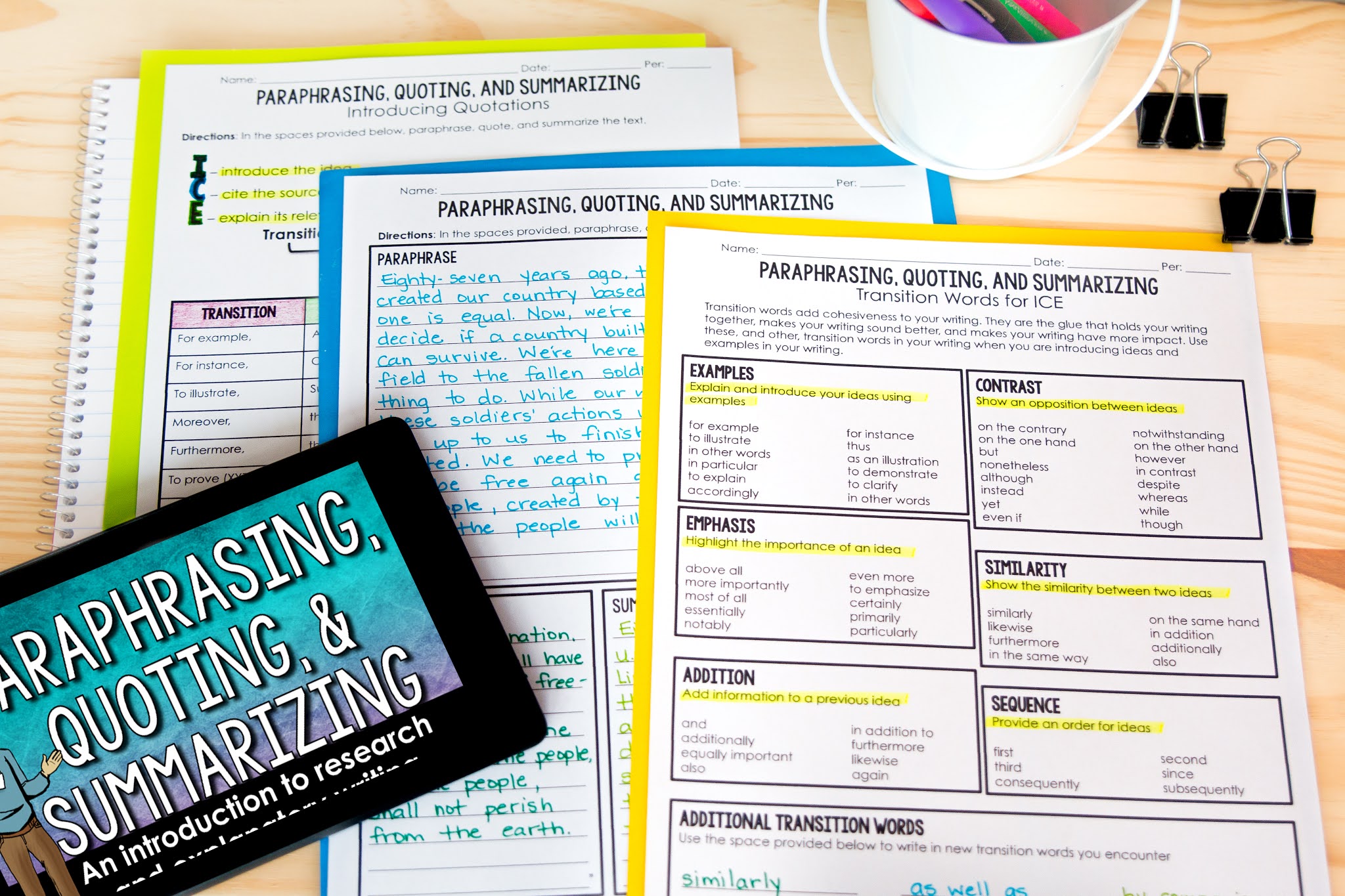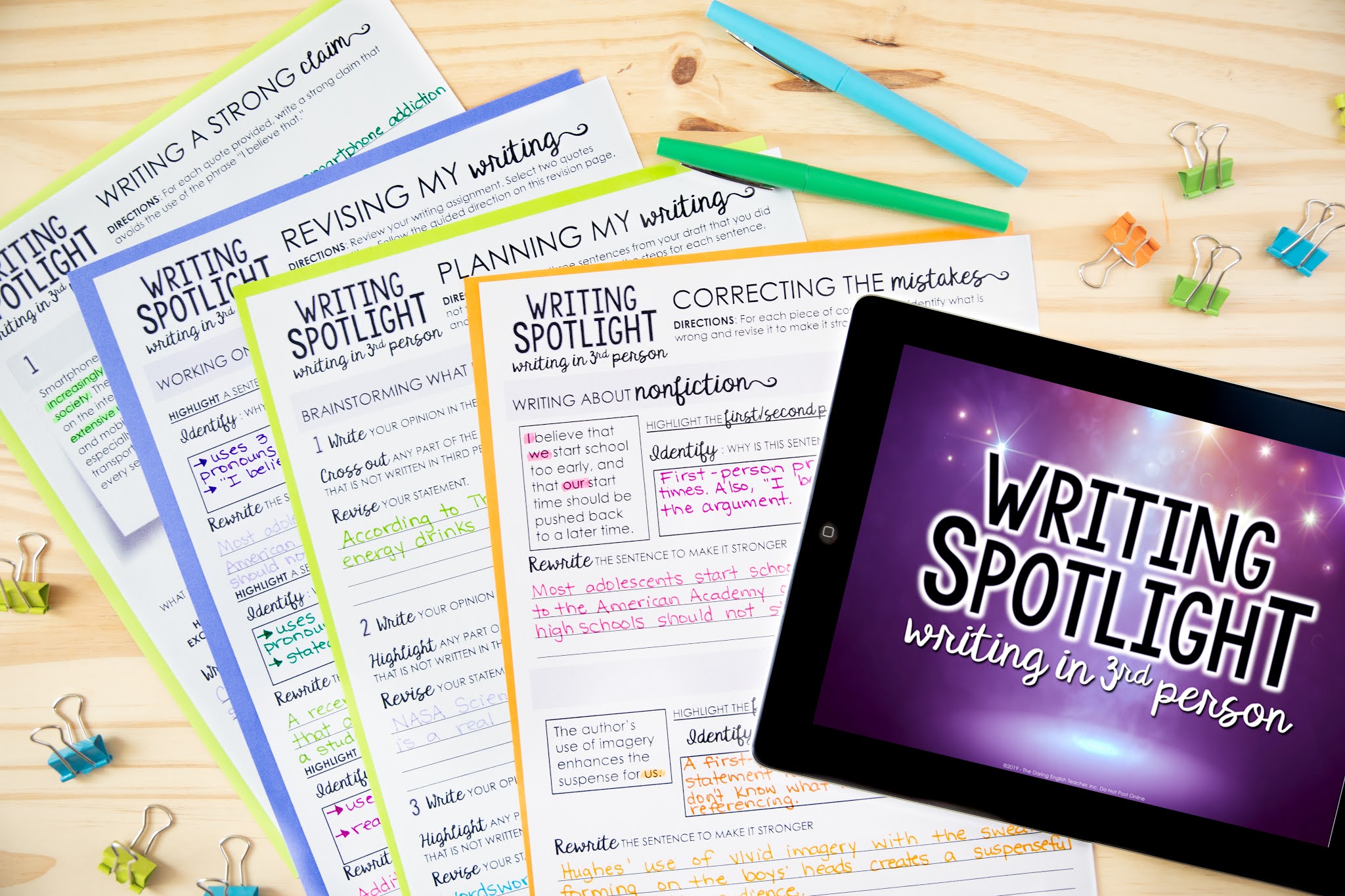How to write a summary is easily one of the most important writing lessons teachers can teach students. We use summarizing every day in a variety of situations. However, as common as it is, it is not that simple of a skill to master or to teach.
To start out with, one reason why students struggle is that they might have a difficult time distinguishing between summarizing, paraphrasing, and quoting. That is why one of my first lessons of the new school year is all about summarizing, paraphrasing, and quoting. I like to teach this lesson at the beginning of the school year because then students have a good understanding of what each of the three is.
 |
| summarizing, paraphrasing, and quoting |
Here, I provide several tips to teach students how to summarize a text and demystify the process.
Tips to Teach Summarizing
Be Brief and Concise
One of the more challenging things for students to do when summarizing is deciding which details are essential and which details are not. Oftentimes, students will choose to err on the side of caution and provide more detail than is appropriate or necessary, for fear they are leaving out something that could be essential. However, this usually results in a 2-plus page summary, which defeats the purpose of summarizing.
To help students decide which information is essential and which isn’t, I have them write only one paragraph and give them a sentence range (usually 6-8 sentences). In general, I try to avoid doing this with writing because we all have that one student who will write just 6 sentences and call it good, regardless if the paragraph is complete. However, giving them a range helps them decide what to include and what to leave out.
Words and Phrases to Avoid
One of the main things I like to focus on with summary writing is getting students to avoid using the phrases “talks about” or “tells”. I do this for two reasons. First, the article, story, or text is not actually talking. Secondly, it is not precise enough of a verb. I want students to use precise vocabulary when referring to what a text or author is doing. Some alternatives I suggest are words like offers, contends, argues, suggests, advocates, describes, etc. These words are more specific and better describe what a text or author is trying to achieve.
Main Ideas, Not Opinions
When asking my students to summarize something they read, I first tell them (as delicately as possible) that in asking them to write a summary, I am not interested in their opinions on what the author is suggesting or claiming, but more so on what they think the article is about. (Sometimes, I’ll ask students to write a paragraph responding to the text’s ideas so students have the opportunity and space to formulate and articulate their thoughts and opinions on what they read. It helps them separate their thoughts from the main ideas of the piece.
Use Third Person
Using the third person is essential in academic writing. Only when the writing requires personal responses, anecdotes, or stories should a student use first person. The two most often used first-person phrases are “In my opinion” and “I believe that…” These are rather easy to coach students to avoid using. I tell them that wherever they use these phrases, just delete them and start the sentence with the next word.
Why Third Person?
Your students do need to understand why they need to use the third person, however. For this reason, I created Writing Spotlight Writing in the Third Person to use with my own students. It not only teaches students why they need to use the third person but also how to begin summarizing text.
 |
| Writing Spotlight Writing in the Third Person |
This bundle includes both the print and digital versions of the following:
- a 24 slide, editable Google Slides™ presentation for direct instruction and whole-class exercises
- a Google Doc™ with 7 student exercises
- Answer keys
- Writing examples
Writing Spotlight lessons allow teachers and students to slow down and really focus on just one aspect of writing. This narrowed focus helps ensure students fully grasp and master a writing skill, such as using the third person.
Looking for more? Check out these other teaching writing resources!
Writing Spotlight Bundle: Teaching Writing in the Secondary ELA Classroom
Writing Spotlight: 3-Sentence Writing Prompt Graphic Organizer (FREE)



